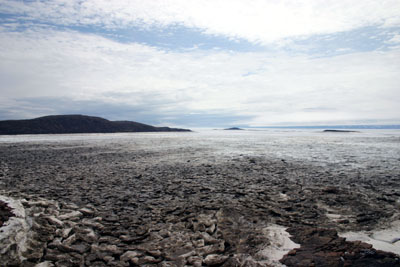Can we utilize our knowledge of biogeographic patterns and historical trends in aquatic invertebrate indicators as markers for conservation planning?
Although aquatic trophic systems are important ecosystem components in northern regions, most Arctic lakes have not yet experienced large-scale changes analogous to those of their temperate counterparts, however, many systems across the boreal-tundra transition have. Some evidence of recent expansion of boreal predators into northern regions have been attributed to warming, permafrost degradation, and to other causes such as species invasions, as well as combinations of these factors. Likewise, Balasubramanian et al. (2017) recently argued that multi-variate indicator analysis needs to move beyond single-factor indicator analysis to adequately characterize dynamic landscapes. As our knowledge of how to describe and model multiple environmental effects on bioindicators improves (Medeiros et al. 2015) we are able to partial out the unique and combined effects of these factors on the trajectory of northern aquatic systems. Likewise, we can apply these methods to establish chronologies of water quantity as well as water quantity by utilizing isotopic indicators in sediment core analysis. Bouchard et al. (2013) found that shallow northern aquatic systems were vulnerable to reduced winter precipitation that enhanced evaporative stress in the drier summer months by comparing the offset between 18O samples from lake-water across two northern regions to those found in bulk sediments. Here lies a fundamental opportunity to apply traditional paleolimnological research methods for current conservation planning and monitoring. Bakaic and Medeiros (2017) and Bakaic et al. (2017) opened the door to utilizing quantitative models based on isotopic analysis of municipal water sources for northern communities for the purposes of environmental vulnerability assessment and conservation planning. By incorporating biochemical, hydrological, and engineering-based modeling, they demonstrated the utility of sediment-based isotopic indicator analysis as a means to answer questions critical for municipal planning. A major component of Dr. Medeiros research program develops the approach to quantitative conservation planning informed by paleolimnology. This will add critical timescales to establish baseline comparisons as well as project future responses to environmental stressors with a focus on conservation planning. Given its novel nature, much of the methodology of this aspect will be developed during the course of the studies themselves. One of the most promising methods for the quantification of conservation planning is the establishment of baseline markers by isotopic indicator analysis. This includes sediment core analysis, but also recognition that systems are dynamic and in transition, which will enable Dr. Medeiros research team to incorporate multiple environmental factors (including environmental change) in their models.
